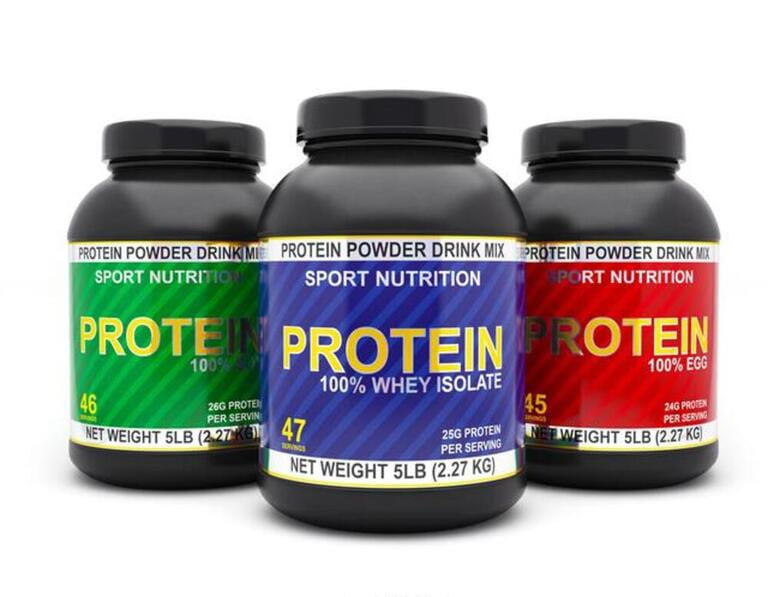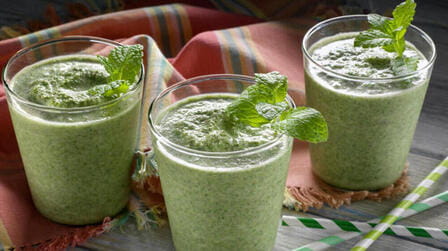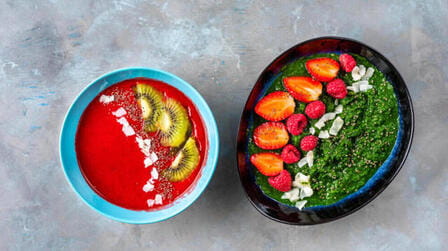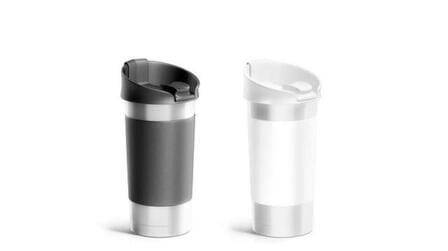If you are looking for a quick and easy way to increase your protein intake, smoothies can be a fantastic option. Not only are they convenient, but they also offer endless possibilities for customization and flavor. However, not all smoothies are created equal when it comes to protein content. In this article, we will explore the top things to put in smoothies for protein and how to make the most of them for optimal nutrition.
Protein Powders: The Ultimate Smoothie Addition
Protein powders have become increasingly popular among athletes and fitness enthusiasts, and for good reason. They are an easy and convenient way to boost your protein intake without adding extra calories or fat. There are many different types of protein powders available on the market, including whey, casein, soy, pea, and hemp. Each type has its unique benefits and drawbacks, so it is essential to choose the one that best suits your needs and preferences.
Whey Protein Powder: The Gold Standard

Whey protein powder is often considered the gold standard of protein supplements due to its high-quality amino acid profile and rapid absorption rate. It is derived from milk and is quickly absorbed by the body, making it an ideal choice for post-workout recovery. Whey protein powder is also versatile and can be used in a variety of smoothie recipes.
Casein Protein Powder: Slow and Steady
Casein protein powder, also derived from milk, is digested more slowly than whey protein powder. This slow-release makes it an excellent option for sustained muscle-building effects. It is often used before bed as it provides a steady flow of amino acids throughout the night, promoting muscle repair and growth.
Soy Protein Powder: A Plant-Based Alternative

Soy protein powder is an excellent alternative to animal-based protein powders, especially for vegans and vegetarians. It is made from soybeans and contains all the essential amino acids necessary for muscle growth and repair. Soy protein powder also has antioxidant properties that may benefit overall health.
Pea Protein Powder: A Hypoallergenic Option
Pea protein powder is a hypoallergenic alternative to other protein powders, making it an excellent choice for those with food allergies or intolerances. It is derived from yellow split peas and provides all the essential amino acids necessary for muscle growth and repair. Pea protein powder is also easy to digest and has a neutral taste, making it a versatile addition to any smoothie recipe.
Hemp Protein Powder: Rich in Nutrients

Hemp protein powder is made from hemp seeds and is rich in healthy fats, fiber, and micronutrients. It provides all of the essential amino acids necessary for muscle growth and repair and has anti-inflammatory properties that may benefit overall health. Hemp protein powder is also an excellent source of iron, zinc, magnesium, and calcium.
Whole Foods: Natural Sources of Protein for Smoothies
While protein powders offer convenience and flexibility, whole foods provide natural sources of protein that are packed with other essential nutrients such as vitamins, minerals, and fiber. Here are some of the top whole foods to add to your smoothies for extra protein:
Greek Yogurt: Creamy and Versatile

Greek yogurt is an excellent source of protein and adds a creamy texture to smoothies. It is also rich in probiotics that support gut health and calcium that promotes bone health.
Silken Tofu: Smooth and Satisfying
Silken tofu is a soft and creamy alternative to dairy-based products, making it an excellent option for vegans and vegetarians. It is high in protein and low in fat and can be blended into smoothies for a smooth and satisfying texture.
Cottage Cheese: High-Protein and Low-Calorie

Cottage cheese is a low-calorie and high-protein option that adds a tangy flavor to smoothies. It is also an excellent source of calcium, which promotes bone health.
Peanut Butter: Nutty and Delicious
Peanut butter adds a nutty and delicious flavor to smoothies while providing a good source of protein. It also contains healthy fats, fiber, and vitamin E that promote heart health and digestion.
Chia Seeds: Tiny but Mighty

Chia seeds are tiny but mighty superfoods that pack a punch of nutrients, including protein, fiber, omega-3 fatty acids, and antioxidants. They add a gel-like texture to smoothies and can help keep you feeling full for longer.
How to Use Things to Put in Smoothies for Protein
To make the most of the things to put in smoothies for protein, it is essential to keep your overall nutrition goals in mind. Here are some tips on how to use protein powders and whole foods in your smoothie recipes:
Choose the Right Protein Powder
Before adding protein powder to your smoothie, consider your goals and preferences. Whey protein powder is ideal for post-workout recovery, while casein protein powder is better suited for sustained muscle-building effects. Soy protein powder is an excellent option for vegans and vegetarians, and pea protein powder is a hypoallergenic choice for those with food allergies or intolerances. Hemp protein powder is nutrient-dense and great for overall health.
Mix and Match Whole Foods

Experiment with different whole foods in your smoothie recipes to add variety and maximize nutrition. Greek yogurt adds creaminess, silken tofu provides a smooth texture, cottage cheese adds tanginess, peanut butter gives a nutty flavor, and chia seeds provide a gel-like texture. Try combining different ingredients to find your perfect balance of taste and nutritional benefits.
Don't Overdo It
While protein is essential for muscle growth and repair, it is crucial not to overdo it. The recommended daily intake of protein is around 0.8 grams per kilogram of body weight, but this can vary depending on individual needs and goals. Too much protein can lead to unwanted side effects such as digestive issues and kidney problems. Always consult with a healthcare professional before increasing your protein intake significantly.
Examples of Smoothie Recipes with Things to Put in Smoothies for Protein
Here are some examples of smoothie recipes that incorporate things to put in smoothies for protein:
Peanut Butter Banana Smoothie
- 1 banana
- 1 tablespoon peanut butter
- 1 scoop whey protein powder
- 1/2 cup almond milk
- Handful of ice cubes
Blend all ingredients together until smooth and creamy. This smoothie is high in protein, healthy fats, and fiber.
Berry Chia Smoothie
- 1 cup mixed berries (fresh or frozen)
- 1 tablespoon chia seeds
- 1 scoop pea protein powder
- 1/2 cup Greek yogurt
- 1/2 cup water
Blend all ingredients together until smooth and creamy. This smoothie is high in protein, fiber, and antioxidants.
Green Machine Smoothie
- Handful of spinach
- 1/2 avocado
- 1 scoop hemp protein powder
- 1/2 cup silken tofu
- 1/2 cup almond milk
- 1/2 cup water
Blend all ingredients together until smooth and creamy. This smoothie is high in protein, healthy fats, and micronutrients.
Comparisons of Things to Put in Smoothies for Protein
When it comes to choosing things to put in smoothies for protein, there are many options available. Here are some comparisons of the most popular choices:
Animal-Based vs. Plant-Based Protein Powders
Animal-based protein powders such as whey and casein are derived from milk and are considered complete proteins. They contain all the essential amino acids necessary for muscle growth and repair. Plant-based protein powders such as soy, pea, and hemp are also complete proteins but may lack certain amino acids or have lower bioavailability than animal-based counterparts. However, plant-based protein powders are often more sustainable and ethical.
Greek Yogurt vs. Silken Tofu

Greek yogurt is a dairy-based product that provides a good source of protein, calcium, and probiotics. It adds a creamy texture to smoothies but may not be suitable for those with lactose intolerance or vegan diets. Silken tofu, on the other hand, is a plant-based alternative that is low in fat and high in protein. It adds a smooth and satisfying texture to smoothies and is suitable for vegans and vegetarians.
Peanut Butter vs. Chia Seeds
Peanut butter is a delicious and nutty addition to smoothies that provides a good source of protein, healthy fats, and fiber. However, it is also high in calories and may not be suitable for those with nut allergies. Chia seeds, on the other hand, are tiny but mighty superfoods that provide protein, fiber, omega-3 fatty acids, and antioxidants. They add a gel-like texture to smoothies and can help keep you feeling full for longer.
Advices for Things to Put in Smoothies for Protein
When adding things to put in smoothies for protein, it is essential to keep in mind your personal goals and preferences. Here are some general tips and advice:
Choose High-Quality Ingredients
When it comes to nutrition, quality matters just as much as quantity. Opt for high-quality ingredients such as organic fruits and vegetables, grass-fed dairy, and non-GMO plant-based proteins. This will ensure that you are getting the most nutritional benefits from your smoothies.
Don't Forget About Carbs and Fats
While protein is essential for muscle growth and repair, it is also important to include carbohydrates and healthy fats in your smoothies for energy and overall health. Add fruits, vegetables, nuts, seeds, and healthy oils to balance out your macros.
Experiment and Have FunSmoothies are a great opportunity to experiment with different flavors and ingredients. Don't be afraid to try new combinations and find what works best for you. Consider adding superfoods such as maca powder, spirulina, or cacao nibs for an extra nutrient boost.
Keep Portion Sizes in Check
While smoothies can be a healthy and convenient meal or snack, it's important not to overdo it. Stick to recommended portion sizes and take into account any additional calories or macros added through protein powders or other ingredients.
FAQs about Things to Put in Smoothies for Protein
Q: How much protein should I aim for in my smoothie?
A: This will depend on your individual needs and goals, but a good rule of thumb is to aim for around 20-30 grams of protein per serving.
Q: Can I use more than one protein powder in my smoothie?
A: Absolutely! Combining different types of protein powders can provide a range of benefits and may improve the overall texture and taste of your smoothie.
Q: Are there any potential side effects of consuming too much protein?
A: Consuming excessive amounts of protein can lead to digestive issues, kidney problems, and other health concerns. Always consult with a healthcare professional before significantly increasing your protein intake.
Q: Can I add things like spinach or kale to my smoothie for extra nutrients?
A: Yes! Adding leafy greens to your smoothie is an excellent way to increase your intake of vitamins, minerals, and fiber. Just be sure to blend them well to avoid any unpleasant textures.
Q: Can I make smoothies ahead of time and store them in the fridge?
A: While it is possible to make smoothies ahead of time, they are best consumed immediately to ensure optimal freshness and nutrient content.
Conclusion
Incorporating things to put in smoothies for protein is an easy and delicious way to increase your daily intake of this essential nutrient. Whether you opt for protein powders or whole foods, there are endless possibilities for customization and flavor. By following these tips and advice, you can create smoothies that are both nutritious and satisfying.












